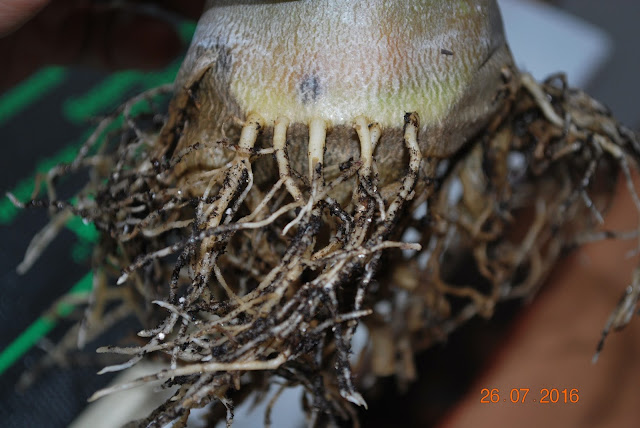
| If you catch it early enough, you can just slice off as much of the dead or dying tissue until you see healthy tissue. Then, hang it somewhere out of the way. You want it to be dry and shaded. |
So today, I unpotted this plant to see what's what. Kids, don't do this in winter unless you have a generous space on your heat mat. It will not be happy with just ambient warmth, it will need supplemental heat. So, fast-forward six months.
 |
| The bottom has healed completely, losing the callous. |
 |
| This, too has healed nicely. And now it needs a bigger pot to grow in. |
Notes:
- Cold damage took 4 months to manifest on this specific plant. Because it was mid-July by the time it was noticed, the heat had already stopped the rot and triggered new roots to form. This means a healthy-looking plant may not necessarily be that healthy. In spring, it pays to closely examine your plants.
- Air dry for a month. I found that the drying time between a plant already suffering from rot and a root-pruned healthy plant is different. The healthy plant heals over from the cut and bounces back in nearly half the time.
- It is easier to rehab a plant like this in gritty mix without soil. That way, it can be watered and therefore will not dehydrate while also letting it dry faster.
- A bigger plant will need longer drying time before being potted. I once had two yearlings out of the pot for about 7 months and when potted up, they just resumed growth. In other words, don't worry about having to keep them out of the pot for the amount of time it takes to form a firm and mature scar tissue or callous over the cuts you made.



No comments:
Post a Comment